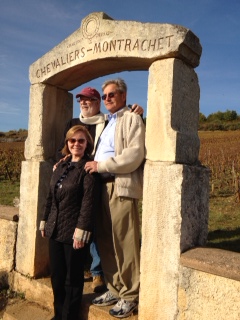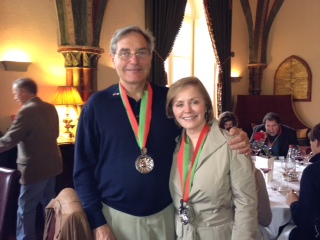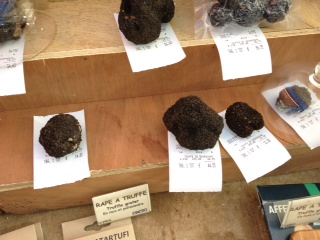(Hotel de Ville)
The Town of Nantucket and the city of Beaune were officially twinned (Jumelage in French) five years ago. The first ceremony took place on Nantucket in 2005; later 50 Nantucketers traveled to France to commemorate the event. This year was the fifth anniversary of Jumelage, and Frank and I were delighted to travel to Beaune with another group of Nantucketers.

(Dinner our first night in Beaune)
As founder Denis Toner wrote, “Beaune and Nantucket share a common interest in history, culture and gastronomy,” and our sun-drenched days there did pay homage to the glories of good food lovingly prepared, the perfect wine paired with each meal, and the beauty of the surrounding countryside.

(Trudy and Frank with Denis Toner at Montrachet)
Beaune is considered the capital of Burgundy wines, and is located between the Cotes de Nuits to the North and the Cotes de Beaune to the South. Sipping the delicious, jewel toned wines at a table filled with old friends and new added richness to our travels. In addition to Beaune, we travelled to Puligny-Montrachet, Cote de Beaune, Vougeot, Abbaye de la Bussiere and Cote de Nuit.

(Les deux chevaliers: Trudy and Frank are knighted!)
One of the highlights of the trip was seeing and tasting the delicious truffles, found by Le Montrachet chef Theirry Berger and his dog, Etouffe.

(Truffles in the marketplace)
It was an enchanting journey through a beautiful country. As always, the people we traveled with and met while there were the most charming part of our adventure. We can’t wait for another Jumelage celebration.

(Trudy entering la comedie for paulee de jumelage)
A beintot!




